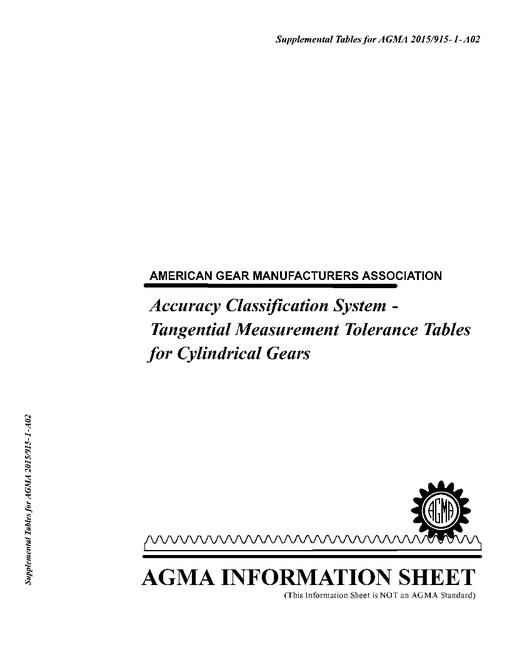-
-
Available Formats
- Availability
- Priced From ( in USD )
-
Available Formats
-
- Immediate download
- $47.00
- Add to Cart
-
- Printed Edition
- Ships in 1-2 business days
- $47.00
- Add to Cart
Customers Who Bought This Also Bought
-

AGMA 14FTM02
Priced From $47.00 -

AGMA 6033-C08
Priced From $270.00 -

AGMA 07FTM12
Priced From $47.00 -

AGMA 2015/915-1-A02 SUPP
Priced From $70.00
About This Item
Full Description
A wide choice of surface roughness parameters is available to characterize components, such as gears or bearings, with the goal of predicting the performance of such metal-to-metal contacting parts. Commonly in industry the Roughness Average (Ra) or the Mean Peak-to-Valley Height (Rz (DIN)) is chosen to calculate the Specific Film Thickness Ratio for both superfinished and honed surfaces. However, these two surface roughness parameters fail to adequately predict the performance properties of surfaces that are superfinished or surfaces that are honed. In this paper, a superfinished surface is defined as a planarized surface having a ≤0.25 mm Ra. A honed surface is not considered to be planarized, even with a finish of ≤0.25 mm Ra. Thus, one is falsely led to predict that a planarized surface or a honed surface, having an equivalent Ra or Rz, will perform similarly. Experimentally, an isotropic planarized surface delivers superior performance. The following discussion utilizes another roughness parameter, 3σ50, to further explain this phenomenon.





